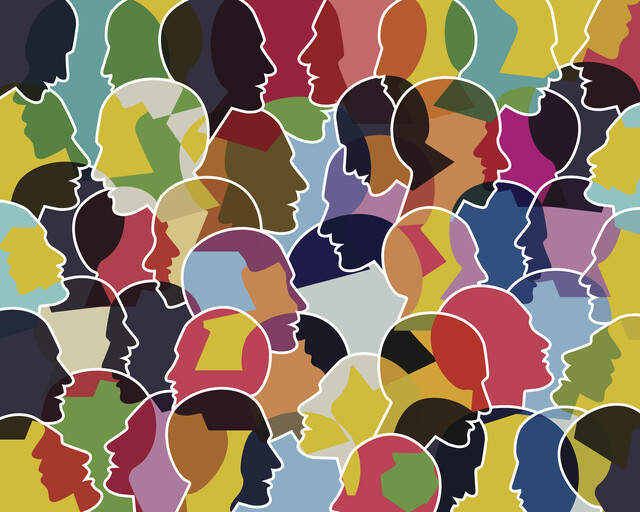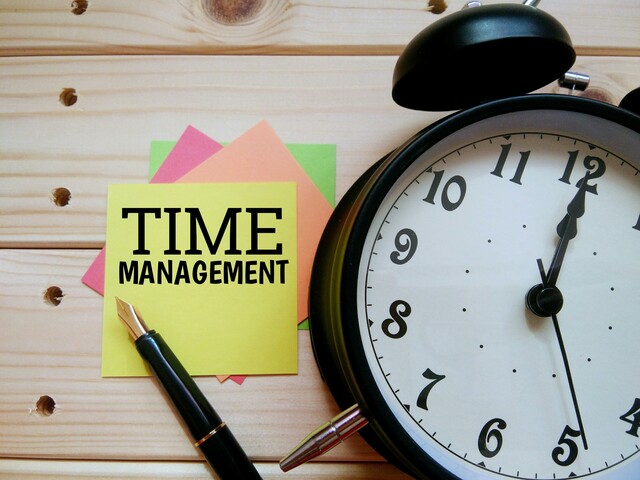A disability is an impairment that can be mental, physical, developmental, cognitive, or emotional. A person can become disabled at birth or over the course of a lifetime. Some disabilities are birth defects, others are revealed as a person ages, and some are caused by accidents and/or other events.
There are more than 50 million Americans with disabilities. The Americans With Disabilities Act of 1990 was passed to help eliminate barriers those with disabilities faced in gaining independence, including protection against discrimination based on a disability. Employers are required by law to provide "reasonable accommodations" to employees with disabilities, unless providing such an accommodation is proven to be an extreme hardship.
Disability Diversity
Part of the diversity present in today's workforce are disabled workers. However, disabled does not mean someone with a disability is incompetent or unable to do their job. Disabled simply means the disabled person has an impairment. It also doesn't mean that the person lives off entitlement programs or gets any "breaks" that a person who is not disabled can't receive.
There are all types of disabilities covered by the word "disability." It does not mean, as we said, that the person with a disability is unable to work or complete their job as well as anyone else. Just as with race, gender, culture, a disability may mean that someone does things a little differently than you. A person with a hearing disability might need special accommodations related to communication. A person with a physical disability may require a different type of entrance into the place of work, or a desk in a location that accommodates a wheelchair.
As with any other person or group of people we've discussed thus far in this course, people with disabilities should be treated the same as everyone else.They should be treated equally. Understanding your own feelings, beliefs, and values related to disabilities, then understanding theirs, will go a long way toward promoting a harmonious, productive workplace environment.
Your Past Experiences With Disabilities
There's no doubt that your past experiences with people who have disabilities will shape the way you think of disabled people in your workplace. If, for example, you knew a blind woman who was unable to care for herself and needed a live-in assistant, you might see blind people as dependent on others for help.
Here's another example. If you knew a person with mental illness who didn't regularly take their medicine, then you might find you believe that those with mental illnesses are unstable at times, because they don't take their medications as they should.
It's important to take a minute to explore your past experiences with disabilities and write down your thoughts, beliefs, and opinions about them. Uncovering your own biases and stereotypes, and replacing them with facts, is the best way to work past them.
Common Stereotypes
Stereotypes are common to the disabled. The reason for this is we make assumptions based on the disability instead of the capability of the disabled person. For example, it's a stereotype that people with cerebral palsy have a lowered intelligence level, when the truth is they don't. It's also a stereotype that they are unable to walk and cannot talk. These are both false as well. However, they are stereotypes that people believe, based on misconceptions, past experiences, and the absence of fact.
The same holds true of those with mental illnesses. The common stereotypes are that they're dangerous, unstable, and face periods of hospitalization. These stereotypes are completely wrong and based on the picture some movies in Hollywood give to us of those with mental illness. But think of it this way: Clinical depression is a form of a mental illness. Anxiety issues can be considered a form of mental illness. Stereotyping someone because they suffer from a disability is taking the individual out of the equation and labeling someone as less than you, or others like you, who don't have a disability.
Whenever you see a person with disability, you should presume they are just as competent as you are in the job they've been assigned. Never assume they aren't capable, or that you need to step in and help. Pity is not the same as compassion. Pity stems from stereotypes and biases. Compassion stems from an awareness of the differences in others and a willingness to work as a team to accomplish goals and meet deadlines.
Using the Correct Terminology
Words can be as powerful as any weapon. Just one word that you use can degrade someone, hurt their feelings, insult them, or even imply that you are discriminating against them. It used to be acceptable to refer to a person with a disability by naming their disability. If a woman was blind, you could say, "the blind woman."
However, labeling someone by a disability takes away from their abilities and individuality. Just as you don't want to be labeled by features you're not proud of (perhaps you have a big nose or ears), people with disabilities don't want their disability to be their name tag, so to speak.
In the early 20th century, the word "handicapped" was popular to describe people with disabilities. It didn't matter what type of disability they had. People with disabilities do not like this term applied to them, though. It suggests they have something that holds them back from doing things people without disabilities can do. It suggests they are somehow less than.
It's always best to use first person when referring to, or talking to, anyone. Address the person. Refer to the person. Do not refer to the disability, just the same as you shouldn't refer to the race, economic circumstance, or religion. Whenever possible, refer to a disabled person by their name. If you don't know their name, use a distinguishing feature, such as the color of their shirt, their location (the woman next to the copier), etc.
Disability Etiquette
Your disabled co-workers and employees are not any different than you, in that they are there to earn a living, advance their career, and better the organization through their contributions. You don't have to "baby" someone with a disability, and you don't have to watch what you say out of fear of offending them.
Here is an example:
A colleague has a form of mental illness. One day, you remark to another co-worker that your son is "driving you crazy." Suddenly, you realize the person with a mental illness has heard you, and you quickly apologize.
Relax! There's no need to worry. If you're worried that you offended someone, ask. Sometimes you won't have to ask.The person will politely tell you they find your words offensive. However, you don't have to tip-toe around people with disabilities. They can use the same slang and jargon that everyone else does.
You'll find that you'll be more relaxed if you just see the person – the individual – instead of seeing them as their disability. Maybe they have a great sense of humor. Perhaps they're a sharp dresser. Maybe they're a hard worker. See them for the things they are.They are not defined by their impairment any more than you are defined by the color of your hair. If you are afraid of them, or uncomfortable around them, because of their disability, then do some research to learn more.
Listed below are some other tips for interacting with people with disabilities.
- Treat people with disabilities as you would anyone else. Offer your hand as you would any other co-worker.
- If someone is deaf, maintain eye contact with them, not an interpreter, when you are communicating. They are the person you are talking to, not the interpreter.
- If you think someone needs assistance, you can offer it. The person may accept it or not. Either way is okay. Don't give your assistance without their permission. That is assuming they can't do something on their own. Let them make that call.
- Sometimes people may have impairments that affect the way they speak. If you're having problems understanding what someone says, ask them to repeat what they said. Be honest. Be polite.
- If someone is in a wheelchair, you want to make sure you converse with them at eye level. This may mean pulling up a chair. Don't bend over, kneel, or lean to talk to them. Also, don't lean on the wheelchair as support. If you can't sit down, it's okay to stand. Just look them in the eye.
- If someone has a visual disability, identify yourself and anyone else who is with you. If talking to someone else other than the blind person in a group, make it clear who you are speaking to by addressing them by name.
- Never pat people in wheelchairs on the head or on the shoulders. That is how you would treat kids or pets. Always treat adults as adults.
- To get the attention of a person who has a hearing disability, tap them on the shoulder. Speak slowly and clearly so the person can read your lips. Don't block the view of your mouth. Speak in normal tones. Don't shout.
Generational Diversity Training
There is more generational diversity in the workplace today than ever before. There are currently three generations in the workplace: Baby Boomers, who were born between the years 1946 and 1964, Generation X-ers, who were born between 1965 and 1980, and Generation Y, (Millennials), born between 1980 and 2000. Each of these generations has values and beliefs common to them. These values and beliefs determine how they communicate, and even their work ethic. However, the values and beliefs differ from one group to the next. This is problematic for organizations today. The lack of understanding about generational diversity is causing tension and dissension in the workplace.
In today's workplace, you need to be able to effectively communicate with anyone, regardless of their generation. To do that, you must also recognize and respect the differences in the three generations and how they view work, communication, and life -- then be flexible to find an effective middle ground. Most of all, you must be willing to listen and learn.
Intergenerational Communication in the Workplace
Communication is a critical part of being successful in business. But since American organizations have not fully recognized the importance of generational diversity in the workplace and how it affects business, miscommunication exists, instead. This creates discord and becomes harmful to the organization's bottom line.
In short, the three generations in the workplace today are misunderstanding each other. The misunderstandings cause loss of productivity, employee disenchantment, and ill will.
The table below shows the different beliefs and values of the three generations as they relate to the workplace. Study the differences, and notice how the differences can cause miscommunications – and even stereotypes – to happen.
|
Baby Boomers |
Generation X |
Millennials |
|
|
Core values |
Anti-War Anti-Government Equal rights Equal opportunity Loyal to their children Optimism Personal gratification Personal growth Spend now, worry later Want to make a difference Involvement Team oriented Transformational |
Balance Diversity Entrepreneurial Fun Independent Informality Lack or organizational loyalty Seek life balance Techno literacy Skepticism Think globally Suspicious of Baby Boomers |
Achievement Avid consumers Civic duty Confidence Diversity Extreme fun High morals Tolerant Competitive Like attention Self-confident Sociability Global community Tech savvy Spiritual Realism Street smarts |
|
Work Ethic |
Driven Quality |
Balance Eliminate the task |
Ambitious Multi-tasking |
|
Time at work views |
Workaholic Visibility is key |
Paid to get job done Project oriented |
Effective but gone at 5 p.m. View work as a gig |
|
Views on work/life balance |
Hesitant about taking time off work for fear of losing place on the team |
Focus on clear balance between work and family |
Balances work with life, community involvement, and self-development. Sabbaticals, flex time, and job sharing requested by this generation |
|
Business focus |
Long hours |
Productivity |
Contribution |
|
Leadership style |
Consensus Collegial |
Everyone is the same Competence Challenge others Ask why |
Achievers |
|
Communication |
Diplomatic Direct style Body language to communicate Flexible Answer questions, expect questions about details Avoid manipulative language OK to use first names Friendly rapport Learn what's important |
Blunt and direct Immediate Straight talk Use email as main tool Learn their language, then speak it Keep it short Share information often Tie message to results Informal Can bridge gap between youngest and oldest workers |
Polite Be respectful Communicate in person if it's important Email and voice mail as main tools Show respect Don't talk down Use action verbs Show you are human by using humor Tie message to goals and aspirations Be positive Prefer to learn in networks and teams using multi-media |
Overcoming the Obstacles
The key to success in any organization when it comes to generational diversity is finding ways to unite the three generations.This helps relieve discord and ill will that may otherwise arise between the generations.
One of the best ways to overcome generational diversity and unite the three generations is mentorship. Mentorship has proven to be an effective way to bridge the gap between the generations by pairing new, younger employees with experienced mentors. The mentors provide help and support to the new employee. The new employee who is mentored will develop faster than another employee who isn't mentored.
The fact is that the three generations can learn from each other. They can draw on the potential, knowledge, and experience each brings to the table to strengthen their achievements and success of themselves as individuals, teams, and an organization. Mentoring becomes a way to exchange knowledge and grow, instead of a certain generation feeling like opinions and directives they don't agree with are being imposed on them.
How to Bridge the Gap Between the Generations
You should strive for an atmosphere of mutual acceptance. Everyone should feel valued, and each generation has something valuable to contribute. However, you must be flexible. You must be willing to learn from other generations. Just because another generation does things differently doesn't mean that they are doing it incorrectly. It's important to listen and to learn. It's important to show respectful behaviors, as we've talked about several times in this course. And, just as when working with any team, it's important to realize that you are all there to achieve common goals. It's your job to find the best way to accomplish them.
Strategies for Effective Communication
Learning ways to effectively work with, and communicate with, another generation who may not share your beliefs and values takes a willingness to be flexible and learn.
Generation X-ers With Baby Boomers
When Generation X-ers are dealing with Baby Boomers, here are some strategies to make communication easier and more effective:
- Be respectful and show your respect. You should acknowledge that you have less experience, and you should also acknowledge that you can learn from them.
- Give them your attention. Baby Boomers can interpret multi-tasking as rudeness.
- Have face-to-face conversations. Baby Boomers don't always prefer voice mail or email. They think it's impersonal and prefer to speak directly.
- Know the corporate history. Learn the ins and outs of the organization. Find out what's worked and what hasn't, especially if you're a manager with Baby Boomers as your employees. Don't expect to come in off the streets and change things without knowing the history.
Strategies for Baby Boomers With Generation X-ers
- Avoid corporate jargon, clichés, and buzzwords. Instead, get to the point.
- Use email when face-to-face contact isn't important or required. It saves time.
- Give them freedom to complete tasks on their own. Give them space.
- Stay flexible. Be open to learning new ideas and methods.
- Don't worry about who has paid their dues. You may have started from the bottom and worked your way up, but that's not the only way to be effective in the organization.
Strategies for Working With Millennials
- They like challenges, so challenge them.
- Ask for their opinion. They are collaborators and team players. When they feel like they're valued, they will respond well. However, they don't respond to a dictator-like environment.
- Give them a mentor. They respect mentors and want to learn.
- Give them feedback. They're used to it and might even expect it.






























